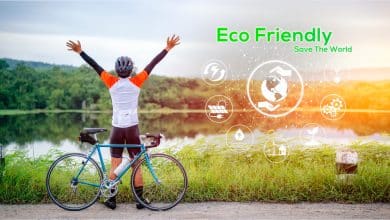Renewable Energy and Efficiency: A Path Towards a Sustainable Future

Hey there, fellow energy enthusiasts! As someone who has dedicated their career to studying and implementing renewable energy and efficiency practices, I’m excited to share some insights into this ever-evolving field. With global warming becoming an increasingly pressing issue, we all must do our part to reduce our carbon footprint and transition toward a more sustainable future.
Renewable energy and efficiency go hand in hand when it comes to reducing our impact on the environment. While renewable energy sources such as solar, wind, hydroelectricity, and geothermal power provide clean alternatives to fossil fuels, improving efficiency helps maximize every watt of electricity produced. From upgrading insulation in buildings to optimizing industrial processes for maximum productivity while minimizing waste generation, there are countless ways we can implement these practices in both personal and professional settings alike. So let’s explore how we can use renewable energy and efficiency to serve ourselves and the planet!
The Importance Of Sustainable Energy Practices

Do you ever wonder what kind of impact your lifestyle choices have on the world around you? As a renewable energy and efficiency expert, I can tell you that every choice we make has a global impact. That’s why adopting sustainable practices in our daily lives is so important.
Living sustainably means taking responsibility for our actions and their environmental effects. This involves being mindful of the resources we use, reducing waste, and minimizing our carbon footprint. By making small changes to our habits, such as using reusable bags or turning off lights when not in use, we can make a big difference in preserving our planet for future generations.
But living sustainably isn’t just about protecting the environment – it also benefits us personally. It promotes healthier lifestyles, reduces expenses, and strengthens communities. When we prioritize sustainability, we create a better quality of life for ourselves and others. So let’s commit to making conscious decisions supporting a more sustainable lifestyle with positive global impacts.
By understanding renewable energy sources, we can take even more significant strides toward building a cleaner and more sustainable future.
Understanding Renewable Energy Sources

When considering renewable energy sources, evaluating their viability and economic benefits is important. While some technologies are still in their early stages of development, others have proven to be reliable and cost-effective options for powering our homes and businesses.
One key advantage of renewables is their positive impact on the environment. Unlike fossil fuels, which emit harmful pollutants into the air and water, most renewable energy technologies produce little or no emissions during operation. This reduces our carbon footprint and helps protect natural ecosystems from pollution and degradation.
Of course, there are trade-offs with any technology. For example, wind turbines can pose a risk to birds and bats if they’re located in areas where these animals migrate or hunt for food. Similarly, hydroelectric dams can disrupt river ecosystems by altering water flow and temperature. By understanding the benefits and drawbacks of different renewable energy sources, we can make informed decisions about how best to meet our energy needs while protecting the planet.
As we continue exploring ways to transition away from fossil fuels, solar power presents an exciting opportunity for harnessing the sun’s energy. Not only is sunlight abundant and free but advances in photovoltaic (PV) technology have made solar panels more efficient. In the next section, we’ll take a closer look at how PV cells work and explore some of the many applications of this powerful technology.
Solar Power: Harnessing The Sun’s Energy
Did you know that the energy from the sun reaching the Earth’s surface in just one hour is enough to power the entire world for a year? This shows how powerful and abundant solar energy can be. Harnessing this energy through solar panel installation has become increasingly popular, as it reduces our carbon footprint and saves money on electricity bills over time.
However, there are some drawbacks to relying solely on solar power. One issue is that less sunlight reaches the panels during cloudy or rainy days, resulting in less energy production. Additionally, excess solar energy generated during peak hours must be stored efficiently during non-peak hours. Companies have developed innovative solar energy storage solutions to address these challenges, such as batteries that store excess energy to ensure constant access to clean and renewable energy.
Overall, switching to solar power can benefit individuals and society by reducing reliance on fossil fuels and minimizing environmental impact. By exploring efficient methods of harnessing the sun’s energy and storing it effectively with technologies like battery storage systems, we can create a more sustainable future for future generations.
As we continue our journey towards a greener future powered by renewable energy sources, wind power emerges as another promising alternative worth exploring. Tapping into nature’s powerhouse, wind turbines generate electricity by converting kinetic energy from the wind into electrical power. Let’s explore how this renewable energy source can help us transition away from traditional forms of power generation and move closer to achieving net-zero emissions.
Wind Power: Tapping Into Nature’s Powerhouse

Regarding renewable energy, wind power is an increasingly popular choice. Harnessing the natural power of wind can be done in a variety of ways, but one of the most effective methods is through wind turbines. These structures are designed to capture kinetic energy from the wind and convert it into electricity that can be used to power homes and businesses.
Wind turbine design has come a long way in recent years, with innovations making them more efficient. One development is the use of offshore wind farms. Placing these turbines out at sea where winds are stronger and more consistent can generate even more electricity than their onshore counterparts.
Utilizing wind power helps reduce our dependence on fossil fuels and significantly benefits the environment. Wind turbines produce no emissions or pollutants and have a much smaller carbon footprint than traditional electricity sources like coal or gas. By tapping into nature’s powerhouse, we can create sustainable sources of energy that will benefit future generations.
Hydroelectricity presents another exciting opportunity to harness nature’s power as we explore different forms of renewable energy. Using water turbines, we can generate clean electricity by converting the kinetic energy from falling water into electrical energy. Let’s dive deeper into this fascinating topic and see how we can utilize the power of water to help build a cleaner, greener future for all.
Hydroelectricity: Utilizing The Power Of Water
Wind power is an incredible renewable energy source, but it’s not the only one. Did you know that hydroelectricity is the world’s largest source of renewable electricity? In fact, according to the International Energy Agency, hydropower generates approximately 16% of the world’s total electricity and around 70% of all renewable electricity.
Water turbines are at the heart of hydroelectric power plants, which harness the kinetic energy from falling or flowing water to generate electricity. The process starts with dam construction, where water is held back behind a barrier. When let through, this water will turn turbines that spin generators to produce electricity.
As you can imagine, constructing these dams requires some excellent engineering skills! But once they’re built, hydroelectric power plants have numerous benefits for people and the planet. Here are two sub-lists:
- Environmental Benefits:
- Produces no greenhouse gas emissions
- It does not require fossil fuels.
- Social Benefits:
- Provides reliable access to clean energy
- It can help mitigate risk during natural disasters such as droughts.
Next, we’ll discuss geothermal energy: unleashing Earth’s heat.
Geothermal Energy: Unleashing Earth’s Heat

Geothermal energy might be the answer if you’re looking for a reliable, low-emission energy source available 24/7. Geothermal exploration involves tapping into the Earth’s internal heat to generate electricity and provide heating and cooling for homes and businesses. This renewable energy source is already being used in various parts of the world, with Iceland leading the way in per capita geothermal usage.
To harness thermal energy conversion from the ground, wells are drilled deep into hot rock formations or underground reservoirs containing hot water or steam. The resulting heat can then be converted into electricity through turbines or used directly for space heating or cooling via heat pumps. Compared to other renewables like wind and solar power, geothermal provides a more consistent output regardless of weather conditions.
Geothermal energy has several advantages over traditional fossil fuels as well. It produces minimal emissions and pollutants, which helps reduce air pollution while also reducing dependence on foreign oil imports. Plus, once installed, geothermal systems require little maintenance compared to other types of renewable infrastructure. With advancements in technology and increasing demand for clean energy solutions, it’s time we start exploring this untapped potential and unleashing Earth’s heat!
Improving Energy Efficiency In Buildings

When it comes to reducing energy consumption and costs, improving the efficiency of our buildings is a crucial step. One way to achieve this is through building insulation. Properly insulating your home can help keep warm air inside during the winter months and cool air in during summer. This reduces the need for heating and cooling systems which can consume large amounts of energy.
Another way to improve energy efficiency in buildings is by installing smart thermostats. These devices allow you to set temperature schedules that automatically adjust based on when people are present, thereby reducing unnecessary heating or cooling when no one is around. They also provide real-time data on energy usage so you can see where savings can be made.
Building owners should consider implementing these strategies as they complement each other well. Insulation helps maintain desired temperatures within a space, while intelligent thermostats help regulate those temperatures more efficiently. Investing in these relatively simple solutions can significantly reduce our carbon footprint and save money on energy bills.
Now that we have covered ways to improve building energy efficiency let’s explore how optimizing industrial processes for greater efficiency can further contribute towards sustainable practices.
Optimizing Industrial Processes For Greater Efficiency

As we continue to push towards a more sustainable future, process optimization becomes an increasingly important strategy for companies looking to reduce their carbon footprint. By streamlining production processes and minimizing waste, businesses can lower their environmental impact and save money in the long run.
To get started with process optimization, it’s essential to conduct an energy audit of your facility. This involves analyzing how energy is used within your operation, from lighting and HVAC systems to manufacturing equipment and transportation. Once you have identified areas where improvements can be made, you can begin implementing changes to increase efficiency and reduce waste.
One effective way to optimize industrial processes is by using automation technology. Automated systems are designed to perform tasks quickly and efficiently without human intervention, reducing labor costs while improving accuracy and consistency. Additionally, these systems often require less energy than traditional production methods, making them an intelligent choice for environmentally-conscious companies. However, it’s important to note that automation should be implemented strategically and thoughtfully; simply automating every aspect of production isn’t necessarily the best approach for every business.
- Tips for optimizing industrial processes:
- Use LED lighting or other high-efficiency bulbs.
- Upgrade outdated machinery with newer models designed for greater efficiency.
- Consider purchasing used equipment if new options aren’t financially feasible.
- Invest in employee training programs focused on sustainability practices.
- Encourage employees at all company levels to share ideas about improving efficiency.
As renewable energy experts strive towards a more efficient world powered by clean energy sources like solar and wind power, it’s crucial not to overlook the role of transportation in this equation. After all, even the most streamlined production processes won’t make much difference if products must be transported inefficiently across long distances. In our next section, we’ll explore some strategies for incorporating eco-friendly transportation into your business model – stay tuned!
The Role Of Transportation In Energy Conservation

When we think about energy conservation, our minds often drift toward renewable sources. However, another area that plays a critical role in this effort is transportation. Today’s vast majority of vehicles on the road rely on fossil fuels, one of the primary culprits behind greenhouse gas emissions and climate change. We must shift towards more sustainable alternatives such as electric vehicles to combat this issue.
Electric cars have come a long way since their inception, with many models now offering comparable performance to traditional gasoline-powered vehicles. Some even argue they’re superior due to lower maintenance costs and reduced environmental impact. While they may require an initial investment, the long-term benefits make them well worth considering for personal and commercial use.
Of course, not everyone can afford an electric vehicle or has access to charging stations yet. That’s where public transportation comes into play. Individuals can significantly reduce their carbon footprint by utilizing buses or trains instead of driving solo in a car while alleviating traffic congestion. Governments worldwide are investing heavily in expanding public transit infrastructure and making it accessible to all citizens. As we progress toward sustainability efforts, incorporating these changes will be essential for achieving lasting success.
As society focuses on sustainable living habits, transportation remains at the forefront of these initiatives effectiveness. With options like electric vehicles and public transport systems readily available (and continuously improving), there’s never been a better time to prioritize eco-friendly commuting methods over traditional ones. Let’s continue pushing ourselves towards cleaner modes of transportation – for ourselves and future generations alike!
The Future Of Renewable Energy And Efficiency

The future of renewable energy and efficiency is bright, but it won’t be without its challenges. Imagine a garden full of blooming flowers – some are already in full bloom, while others need more time to grow. Similarly, our advancements in renewable technology have brought us closer to our goal of sustainable living, but there’s still room for improvement. We must continue striving towards developing better efficient, and cost-effective technologies.
The global impact of renewable energy adoption cannot be overstated. It has the potential to create job opportunities, reduce greenhouse gas emissions, and mitigate climate change impacts. However, despite these benefits, not all countries have been quick to adopt renewable energy sources due to economic limitations or lack of resources. Governments must incentivize renewables through subsidies or tax incentives to overcome these challenges.
Adoption rates will also play a crucial role in shaping the future of renewables. As individuals become aware of how their actions affect the environment and society, they’ll begin making conscious decisions prioritizing sustainability over convenience. With this shift towards greener lifestyles comes greater demand for clean energy solutions, which can only mean good things for the future of our planet.
Frequently Asked Questions
How Do I Install Solar Panels On My Roof?
When it comes to installing solar panels on your roof, there are a few things you need to consider. Firstly, is your roof suitable for installation? You’ll want to ensure that your roof has enough space and receives enough direct sunlight throughout the day. Secondly, what’s the installation process like? Choosing a reputable installer who can guide you through every step of the process, from assessing your roof’s suitability to determining the best placement for optimal energy production, is essential. As a renewable energy and efficiency expert, I highly recommend investing in solar panels as they benefit you financially and contribute towards creating a more sustainable future for everyone. With an increasing desire to serve others and reduce our carbon footprint, switching to solar power is a win-win situation.
What Is The Cost Of A Wind Turbine For Residential Use?
If you’re looking to harness the power of wind energy at home, small-scale wind turbines are a great option. But what about maintenance costs? Well, let me tell you – they can vary depending on the type and size of the turbine you choose. Generally speaking, smaller turbines require less upkeep than larger ones, but it’s always important to factor in regular inspections and repairs to ensure your system is running efficiently. So when it comes to cost, consider it an investment in your wallet and the planet. With proper care and attention, a residential wind turbine can pay for itself over time while reducing your carbon footprint. It’s a win-win situation!
What Are The Environmental Impacts Of Hydroelectric Dams?
As a renewable energy and efficiency expert, I want to highlight the environmental impacts of hydroelectric dams. These structures have been known to negatively affect fish migration patterns, disrupting natural ecosystems in rivers and streams. Additionally, the creation of dams often leads to deforestation and displacement of local communities. It’s essential for us as consumers to consider these consequences when choosing our sources of energy. As someone with a subconscious desire to serve others, we must prioritize sustainable practices that benefit both people and the planet.
How Can I Reduce My Energy Consumption At Home?
Looking to cut down on your energy consumption at home? Have you ever considered investing in smart appliances and energy-efficient lighting options? As a renewable energy and efficiency expert, I’ve seen first-hand how these simple changes can lead to significant results. Not only will they help reduce your monthly bills, but they’ll also lessen the environmental impact on your household. With new technology constantly emerging, there’s never been a better time to switch. So why not give it a try and see just how much you can save while serving the planet at the same time?
What Are The Current Government Incentives For Investing In Renewable Energy?
I’m excited to share that the government offers great incentives for investing in renewable energy. For starters, solar tax credits are available that can help you save money on your taxes if you install solar panels at home. Plus, green energy grants are available to provide financial assistance to those who want to invest in sustainable energy solutions. It’s a win-win situation because you will reduce your carbon footprint and help the environment and save money in the long run by using less energy from traditional power sources. So why not take advantage of these incentives and positively impact your wallet and the planet?
Conclusion
In conclusion, renewable energy and efficiency are vital components in creating a sustainable future for our planet. As someone who has worked in this field for years, I can attest to the endless benefits of utilizing these resources.
Think of it like planting a garden – with each solar panel or wind turbine installed, and we are sowing the seeds for a brighter and cleaner tomorrow. And just as tending to a garden requires effort and dedication, so does implementing renewable energy solutions. But trust me when I say the rewards far outweigh any initial costs or challenges.
So let’s take action now and start making changes towards renewable energy and efficiency. It’s time to invest in our collective future by reducing our carbon footprint and embracing sustainable practices. Together, we can create a more vibrant world filled with clean air, healthy ecosystems, and abundant natural resources for future generations.
Renewable Energy and Efficiency Resources
The National Renewable Energy Laboratory (NREL) – https://www.nrel.gov/
The International Renewable Energy Agency (IRENA) – https://www.irena.org/
The Energy Efficiency and Renewable Energy (EERE) program of the U.S. Department of Energy – https://www.energy.gov/eere/office-energy-efficiency



